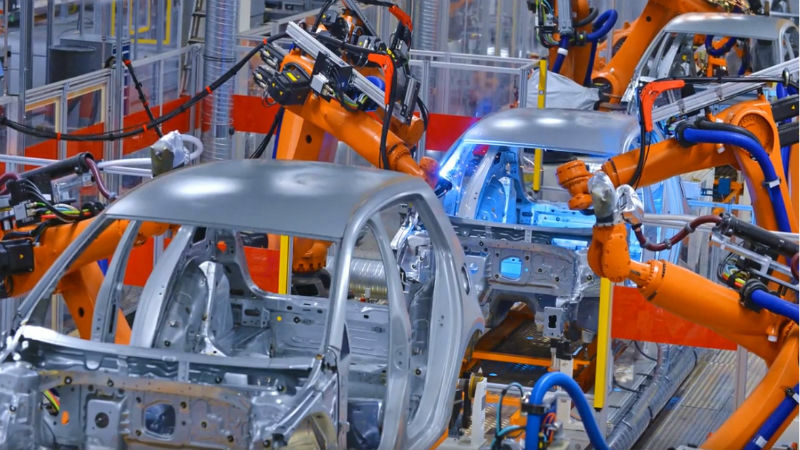Understanding Your Organization’s AI Maturity: A Roadmap to Transformation


The rapid advancements in technology have introduced many types of physical robotic systems in the workplace. Industrial robots now paint, weld, push, pull, lift and assemble products, while collaborative robots, since they have one or more mechanical arms, provide workers with an extra set of hands. Robots also assist physicians and perform delicate surgical tasks.
Robots require complex programming to operate. However, with the increased availability of open-source robotics operating systems, sophisticated equipment is now increasingly accessible and flexible. As robots become integrated into our daily work life, the safety of people working nearby is a growing concern. In this blog, I will focus on the accident types, hazards, and possible solutions when working with industrial robots.
OSHA’s technical manual identifies four broad categories of the types of accidents that can occur when working with industrial robots. These include:
Given the significant potential for accidents, it is essential to understand why these incidents happen. According to OSHA’s technical manual, typically these problems stem from human error, control errors, unauthorized access, mechanical failures, environmental sources, power systems, and improper installation. By far, the most common cause is human error. Workers get comfortable with the equipment and complacent with the hazards and place themselves in unsafe areas when programming or performing maintenance on a robot. Alternatively, the problem is a human-introduced programming error or error in connecting equipment. Other hazards may result from improper installation, failure to properly maintain equipment, and malfunctions in the hydraulic and electrical systems.
Industrial robots are capable of powerful movements through a large area, even beyond the base of the unit. Changes to the materials or the environment may affect the preprogrammed movements of the robot. The use of physical barriers typically protects workers from industrial robot hazards. However, accidents do happen. In 2017, an employee, working for a manufacturer of automobile chassis and body components, leaned through a light curtain to change a welding tip on a robot. Another robot unexpectedly energized. The robotic arm struck the employee who sustained a fracture and dislocation of his left hip, requiring hospitalization.
Employers should ensure that workers understand and recognize these hazards. For starters, even before the business utilizes any robots, it is essential to conduct a risk assessment during the design phase. At this point, identify the robot's physical and operational limitations, purpose and use (or misuse). Next, pinpoint any reasonably foreseeable hazards and relevant hazardous conditions that may arise. One consideration is human interaction during the life cycle of the machine, and possible states of the machine. The goal is to eliminate as many identified hazards as possible. Then, through the risk assessment process, determine the appropriate type of functional safety controls to implement to reduce risk to an acceptable level.
The information collected during the risk assessment determines the type of hardware and controls utilized for the safety control system. Engineering controls are used to restrict access to a hazard zone. They may include control reliable electromechanical door interlocks, fixed barriers, two-hand actuation control systems, and presence-sensing devices such as light curtains, area laser scanners or pressure mats. These devices cut the probability of exposure to the hazard (i.e., harm) but don't reduce the potential severity of the injury. Administrative controls are generally the least favored preventative measures because they still rely on the human being and have only a possibility of reducing the probability of harm. These controls include awareness devices, like signs, audible alarms, and visual warning lights to alert workers to danger. They also include procedures (operating and maintenance) and training.
OSHA recommends that workers who program, operate, maintain, or repair robots or robot systems should receive adequate safety training, and they should be able to demonstrate their competence to perform their jobs safely. When engineering, work practice and administrative controls do not provide sufficient protection, personal protective equipment (PPE) employers must provide and ensure employees use personal protective equipment. PPE includes things like respirators, gloves, face shields, hearing protection, hard hats, and safety glasses that workers need to wear as a final layer of defense against injury.
Donna McEntee is the Workplace Safety and Health Solution Manager at Skillsoft.
We will email when we make a new post in your interest area.

